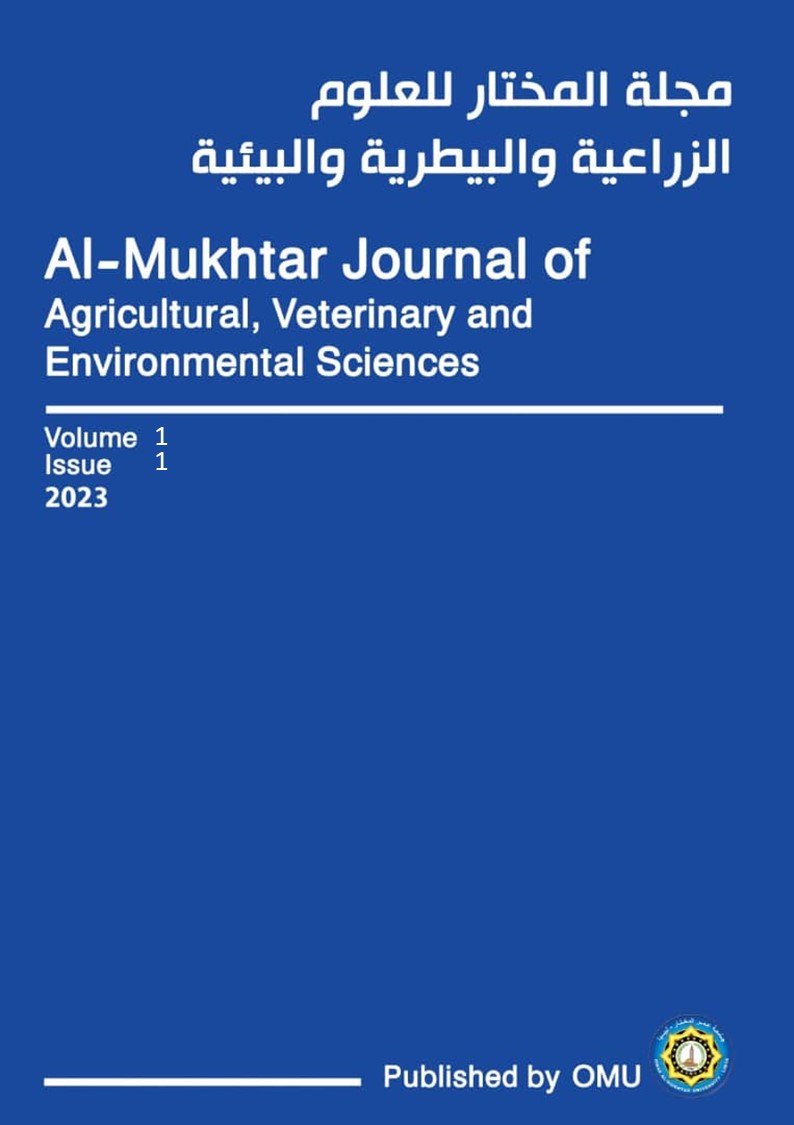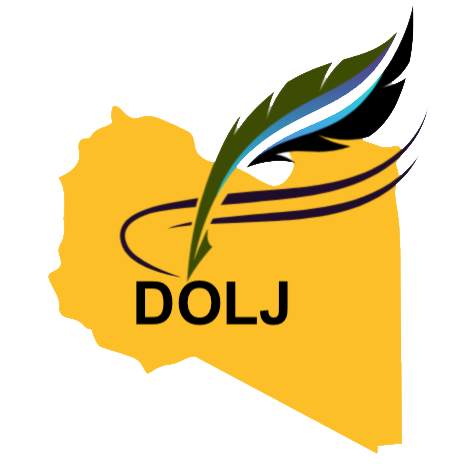Genotype-Environment Interaction and Phenotypic Stability Analysis for Grain Yield of Durum Wheat in the Misurata Region
DOI:
https://doi.org/10.54172/tbbt3321Keywords:
Durum wheat, Grain yield, Stability, LibyaAbstract
The objectives of this study were to assess genotype-environment (GE) interaction and determine stable durum wheat (Triticum turgidum var. durum Desf.) genotypes for grain yield in Misurata in the central Libyan region. Fifteen durum wheat genotypes were evaluated under supplementary irrigation using a randomized complete block design with 3 replications. The study was repeated for 5 years. GE interaction was analyzed using linear regression techniques. There was considerable variation in grain yield among the different genotypes. Stability was estimated using the Eberhart and Russell method. According to the stability analysis, genotype G9 was the most stable for grain yield. The regression coefficient (bi) for genotype G9 was almost one and had the lowest deviations from regressions (S2di). In contrast, genotypes G10 and G3 showed regression coefficients greater than 1.0, indicating sensitivity to environmental changes for grain yield. Among the genotypes, the highest average grain yield was obtained from genotypes G9 and G10 (3.19 and 3.65 ton ha-1, respectively) across environments. Genotype G10 had the highest grain yield as well as a regression coefficient greater than one, suggesting that G10 was sensitive to changing environments and could be recommended for more favorable environments.
References
Al, W., ORKING, G., & CLIMA, O. (2008). Climate change and food security: a framework doc-ument. FAO Rome.
Akinwale, M., Gregorio, G., Nwilene, F., Akinyele, B., Ogunbayo, S., & Odiyi, A. (2011). Herita-bility and correlation coefficient analysis for yield and its components in rice (Oryza sativa L.). African Journal of plant science, 5(3), 207-212.
Ali, N., Javidfar, F., & Mirza, Y. (2003). Selection of stable rapeseed (Brassica napus L.) geno-types through regression analysis. Pak. J. Bot, 35(2), 175-180.
Arslan, B. (2007). Assessing of heritability and variance components of yield and some agronomic traits of different safflower (Carthamus tinctorius L.) cultivars. Asian Journal of Plant Sci-ences, 6(3), 554-557.
Bassi, F. M., & Nachit, M. M. (2019). Genetic gain for yield and allelic diversity over 35 years of durum wheat breeding at ICARDA. Crop Breed. Genet. Genom, 1, 1-19.
Carneiro, A. R. T., Sanglard, D. A., Azevedo, A. M., Souza, T. L. P. O. d., Pereira, H. S., & Melo, L. C. (2019). Fuzzy logic in automation for interpretation of adaptability and stability in plant breeding studies. Scientia agricola, 76(2), 123-129. doi: 10.1590/1678-992x-2017-0207
Casadebaig, P., Zheng, B., Chapman, S., Huth, N., Faivre, R., & Chenu, K. (2016). Assessment of the Potential Impacts of Wheat Plant Traits across Environments by Combining Crop Mod-eling and Global Sensitivity Analysis. [Research Support, Non-U.S. Gov't]. PLoS One, 11(1), e0146385. doi: 10.1371/journal.pone.0146385
Ceccarelli, S., Grando, S., Maatougui, M., Michael, M., Slash, M., Haghparast, R., Nachit, M. (2010). Plant breeding and climate changes. The Journal of agricultural science, 148(6), 627-637. doi: 10.1017/s0021859610000651
Eberhart, S. A., & Russell, W. A. (1966). Stability Parameters for Comparing Varieties 1. Crop Sci-ence, 6(1), 36-40. doi:10.2135/cropsci1966.0011183x000600010011x
FAO. (2020). FAOSTAT statistical database: [Rome]: FAO, c2018-. Retrieved from https://search.library.wisc.edu/catalog/999890171702121
Hébert, Y., Plomion, C., & Harzic, N. (1995). Genotype x environment interaction for root traits in maize, as analysed with factorial regression models. Euphytica, 81(1), 85-92.
Kehel, Z., & Thomas, P. (2016). IWIN-DAP: An Excel Macro to Analyze CIMMYT International Wheat Trial Data: CIMMYT http://orderseed.cimmyt.org/iwin-results.php.
Kurukulasuriya, P., & Rosenthal, S. (2013). Climate change and agriculture: A review of impacts and adaptations.
Purchase, J. L., Hatting, H., & van Deventer, C. S. (2013). Genotype × environment interaction of winter wheat (Triticum aestivum L.) in South Africa: II. Stability analysis of yield perfor-mance. South African journal of plant and soil, 17(3), 101-107. doi: 10.1080/02571862.2000.10634878
Romagosa, I., & Fox, P. N. (1993). Genotype× environment interaction and adaptation. Plant breed-ing: principles and prospects, 373-390.
Tadesse, W., Sanchez-Garcia, M., Thabet, A., Tawkaz, S., El Hanafi, S., El-Baouchi, P. S. A., Baum, M. (2019). Wheat breeding Handbook at ICARDA. Pp-, Beirut, Lebanon. ISBN (10 digit), 92-9127.
Downloads
Published
License
Copyright (c) 2023 Mukhtar O. Agoub , Ali S. Shreidi, Abu Llbayda M. Almajdoub , Hassan E. Tantun (Author)

This work is licensed under a Creative Commons Attribution-NonCommercial 4.0 International License.













